MASD-History
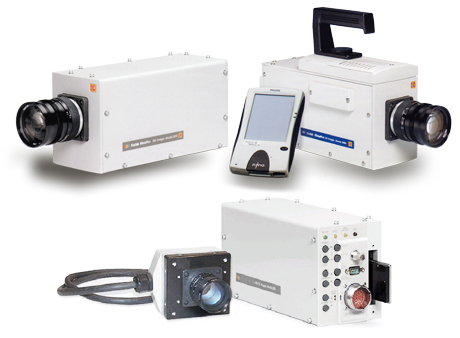
Fortsetzung als Roper Scientific MASD:
(HG, CR, HG-TX Imager, Modell 2000)
Produktionszeit 1998 – 2002
Lange Zeit der Standard im Crashtest
HG Imager, Modell 2000
CR Imager, Modell 2000
HG-TX Imager, Modell 2000
512 x 384 CCD-Sensor (Kodak C5), 24-bit
512 x 384 @ 1000 fps
512 x 192 @ 2000 fps
Elektronischer Verschluss 23 µs bis 983 µs
2 s Aufnahmezeit bei 1000 Bilder/s
Gewicht 4,4 kg
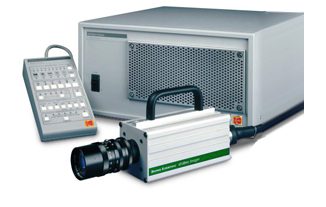
Fortsetzung als Roper Scientific MASD:
(HS Motion Analyzer 4540mx / Fastcam Ultima 40k)
Produktionszeit 1999 – 2001
HS Motion Analyzer, Model 4540MX
256 x 256 NMOS-Sensor, 8-bit
256 x 256 @ 4500 Bilder/s (fps)
Bis zu 40500 Bilder/s (fps) in Teilauflösung
5,4 s Aufnahmezeit bei 4500 Bilder/s
Systemgewicht ca. 22 kg
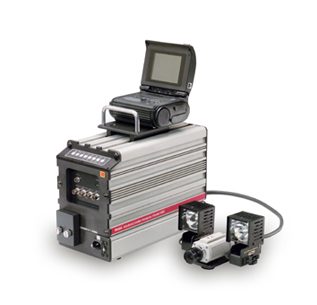
Produktionszeit 1995 – 2000
Erste mobile und „budgetorienterte“ Industrielösung
Fortsetzung als Roper Scientific MASD:
(Motion Corder Analyzer SR / Fastcam Super 10K)
Motion Corder Analyzer SR Serie
512 x 480 CCD-Sensor (TC236/TC237)
512 x 480 @ 250 Bilder/s (fps)
Bis zu 10000 Bilder/s (fps) in Teilauflösung
Gewicht ca. 10 kg
Motion Corder Analyzer Modell 1000 (bis 1998)
Motion Corder Analyzer Modell SR-500
Motion Corder Analyzer Modell SR-1000
Motion Corder Analyzer Modell SR-Ultra
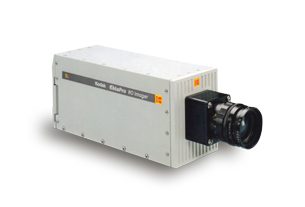
Produktionszeit 1996 – 1999
Erste Highspeed-Kamera ohne externen Prozessor
Erste Highspeed-Kamera mit Ethernet-Interface
EktaPro RO Imager
512 x 384 CCD-Sensor (Kodak C5), 24-bit
512 x 384 @ 1000 fps
Elektronischer Verschluss 50 µs bis 1 ms
1 s Aufnahmezeit bei 1000 Bilder/s
Gewicht 4,4 kg
Vorgänger der HG/CR/TX Imager 2000
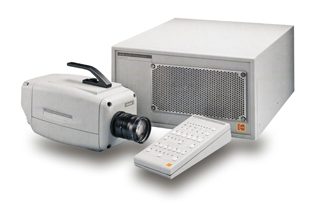
Produktionszeit 1993 – 1999
HS Motion Analyzer, Model 4540
256 x 256 NMOS-Sensor, 8-bit
256 x 256 @ 4500 Bilder/s (fps)
Bis zu 40500 Bilder/s (fps) in Teilauflösung
1,1 s Aufnahmezeit bei 4500 Bilder/s
Systemgewicht ca. 25 kg
Vorgänger des HS4540mx
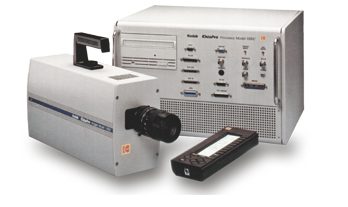
Produktionszeit 1994 – 1998
Erste digitale Farb-Highspeed-Kamera
basierend aus Kodak C5-Sensor
EktaPro Motion Analyzer 1000 HRC
512 x 384 CCD-Sensor, 24-bit
512 x 384 @ 1000 fps
Elektronischer Verschluss 50 µs bis 1 ms
5,5 s Aufnahmezeit bei 1000 Bilder/s
Systemgewicht ca. 25 kg
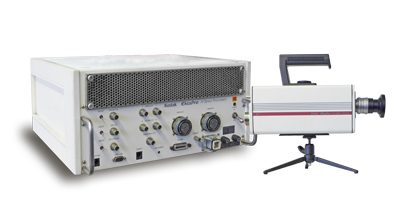
Produktionszeit 1989 – 1995
Erste beschleunigungsfeste digitale Onboard-Kamera
EktaPro Hi-Spec (Prozessor)
High G Variante des EM1012
Anschluss für max. 2 Kameraköpfe
Archivierung in DRAM Speicher
5 Sekunden Aufnahmezeit bei 1000 fps
Systemgewicht ca. 25 kg
EktaPro Hi-Spec Imager (Kamera)
High G Variante der EktaPro 1000 Kamera
192 x 239 NMOS-Sensor, 8-bit Monochrom
192 x 239 @ 1000 Bilder/s (fps)
192 x 16 @ 12000 Bilder/s (fps)
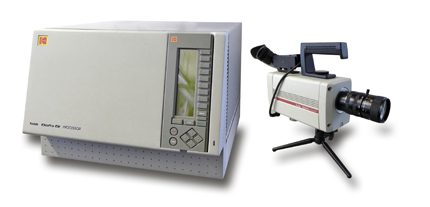
Produktionszeit 1989 – 1995
Erste digitale Highpseed-Kamera mit DRAM
EktaPro EM1012 (Prozessor)
EktaPro EM1000E (Prozessor)
Anschluss für max. 2 Kameraköpfe
Archivierung in DRAM Speicher
5 Sekunden Aufnahmezeit bei 1000 fps
Systemgewicht ca. 25 kg
EktaPro 1000 Imager (Kamera)
192 x 239 NMOS-Sensor, 8-bit Monochrom
192 x 239 @ 1000 Bilder/s (fps)
Nur mit EM1012 Prozessor bis zu
192 x 16 @ 12000 Bilder/s (fps)
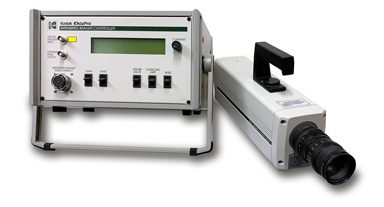
Produktionszeit 1988 – 1994
EktaPro Intensified Imager (Prozessor)
Bildverstärker für EktaPro 1000 TR / EM
Belichtungszeiten von 10 µs bis 5 ms
EktaPro Intensified Imager (Kamera)
192 x 240 NMOS-Sensor
192 x 240 @ 1000 Bilder/s (fps)
192 x 16 @ 6000 Bilder/s (fps)
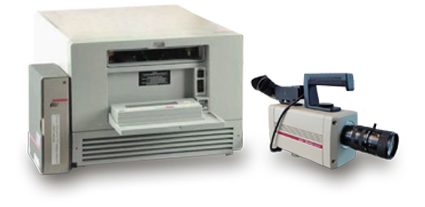
Produktionszeit 1987 – 1990
EktaPro 1000 TR (Prozessor)
Anschluss für max. 2 Kameraköpfe
Archivierung auf analogem Magnetband
38-Spur Magnetband-Recorder
30 Sekunden Aufnahmezeit bei 1000 fps
Systemgewicht ca. 40 kg
EktaPro 1000 Imager (Kamera)
192 x 240 NMOS-Sensor, 6-bit Monochrom
192 x 240 @ 1000 Bilder/s (fps)
192 x 16 @ 6000 Bilder/s (fps)
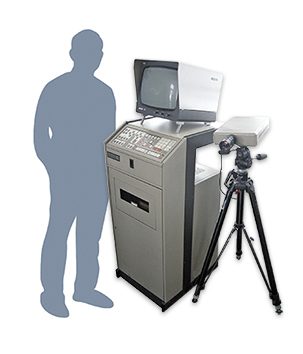
Eastman Kodak/Spin Physics Modell SP 2000
Die erste digitale Highspeed Kamera der Welt
Produktionszeit 1981 – 1989
192 x 240 NMOS-Sensor @ 2000 fps
6-bit Monochrom
12000 fps bei 1/6 Sensorauflösung
Archivierung auf analogem Magnetband
34-Spur Magnetband-Recorder
45 Sekunden Aufnahmezeit bei 2000 fps
Systemgewicht ca. 130 kg

Fortsetzung als Roper Scientific MASD:
(HG, CR, HG-TX Imager, Modell 2000)
Produktionszeit 1998 – 2002
Lange Zeit der Standard im Crashtest
HG Imager, Modell 2000
CR Imager, Modell 2000
HG-TX Imager, Modell 2000
512 x 384 CCD-Sensor (Kodak C5), 24-bit
512 x 384 @ 1000 fps
512 x 192 @ 2000 fps
Elektronischer Verschluss 23 µs bis 983 µs
2 s Aufnahmezeit bei 1000 Bilder/s
Gewicht 4,4 kg

Fortsetzung als Roper Scientific MASD:
(HS Motion Analyzer 4540mx / Fastcam Ultima 40k)
Produktionszeit 1999 – 2001
HS Motion Analyzer, Model 4540MX
256 x 256 NMOS-Sensor, 8-bit
256 x 256 @ 4500 Bilder/s (fps)
Bis zu 40500 Bilder/s (fps) in Teilauflösung
5,4 s Aufnahmezeit bei 4500 Bilder/s
Systemgewicht ca. 22 kg

Produktionszeit 1995 – 2000
Erste mobile und „budgetorienterte“ Industrielösung
Fortsetzung als Roper Scientific MASD:
(Motion Corder Analyzer SR / Fastcam Super 10K)
Motion Corder Analyzer SR Serie
512 x 480 CCD-Sensor (TC236/TC237)
512 x 480 @ 250 Bilder/s (fps)
Bis zu 10000 Bilder/s (fps) in Teilauflösung
Gewicht ca. 10 kg
Motion Corder Analyzer Modell 1000 (bis 1998)
Motion Corder Analyzer Modell SR-500
Motion Corder Analyzer Modell SR-1000
Motion Corder Analyzer Modell SR-Ultra

Produktionszeit 1996 – 1999
Erste Highspeed-Kamera ohne externen Prozessor
Erste Highspeed-Kamera mit Ethernet-Interface
EktaPro RO Imager
512 x 384 CCD-Sensor (Kodak C5), 24-bit
512 x 384 @ 1000 fps
Elektronischer Verschluss 50 µs bis 1 ms
1 s Aufnahmezeit bei 1000 Bilder/s
Gewicht 4,4 kg
Vorgänger der HG/CR/TX Imager 2000

Produktionszeit 1993 – 1999
HS Motion Analyzer, Model 4540
256 x 256 NMOS-Sensor, 8-bit
256 x 256 @ 4500 Bilder/s (fps)
Bis zu 40500 Bilder/s (fps) in Teilauflösung
1,1 s Aufnahmezeit bei 4500 Bilder/s
Systemgewicht ca. 25 kg
Vorgänger des HS4540mx

Produktionszeit 1994 – 1998
Erste digitale Farb-Highspeed-Kamera
basierend aus Kodak C5-Sensor
EktaPro Motion Analyzer 1000 HRC
512 x 384 CCD-Sensor, 24-bit
512 x 384 @ 1000 fps
Elektronischer Verschluss 50 µs bis 1 ms
5,5 s Aufnahmezeit bei 1000 Bilder/s
Systemgewicht ca. 25 kg

Produktionszeit 1989 – 1995
Erste beschleunigungsfeste digitale Onboard-Kamera
EktaPro Hi-Spec (Prozessor)
High G Variante des EM1012
Anschluss für max. 2 Kameraköpfe
Archivierung in DRAM Speicher
5 Sekunden Aufnahmezeit bei 1000 fps
Systemgewicht ca. 25 kg
EktaPro Hi-Spec Imager (Kamera)
High G Variante der EktaPro 1000 Kamera
192 x 239 NMOS-Sensor, 8-bit Monochrom
192 x 239 @ 1000 Bilder/s (fps)
192 x 16 @ 12000 Bilder/s (fps)

Produktionszeit 1989 – 1995
Erste digitale Highpseed-Kamera mit DRAM
EktaPro EM1012 (Prozessor)
EktaPro EM1000E (Prozessor)
Anschluss für max. 2 Kameraköpfe
Archivierung in DRAM Speicher
5 Sekunden Aufnahmezeit bei 1000 fps
Systemgewicht ca. 25 kg
EktaPro 1000 Imager (Kamera)
192 x 239 NMOS-Sensor, 8-bit Monochrom
192 x 239 @ 1000 Bilder/s (fps)
Nur mit EM1012 Prozessor bis zu
192 x 16 @ 12000 Bilder/s (fps)

Produktionszeit 1988 – 1994
EktaPro Intensified Imager (Prozessor)
Bildverstärker für EktaPro 1000 TR / EM
Belichtungszeiten von 10 µs bis 5 ms
EktaPro Intensified Imager (Kamera)
192 x 240 NMOS-Sensor
192 x 240 @ 1000 Bilder/s (fps)
192 x 16 @ 6000 Bilder/s (fps)

Produktionszeit 1987 – 1990
EktaPro 1000 TR (Prozessor)
Anschluss für max. 2 Kameraköpfe
Archivierung auf analogem Magnetband
38-Spur Magnetband-Recorder
30 Sekunden Aufnahmezeit bei 1000 fps
Systemgewicht ca. 40 kg
EktaPro 1000 Imager (Kamera)
192 x 240 NMOS-Sensor, 6-bit Monochrom
192 x 240 @ 1000 Bilder/s (fps)
192 x 16 @ 6000 Bilder/s (fps)

Eastman Kodak/Spin Physics Modell SP 2000
Die erste digitale Highspeed Kamera der Welt
Produktionszeit 1981 – 1989
192 x 240 NMOS-Sensor @ 2000 fps
6-bit Monochrom
12000 fps bei 1/6 Sensorauflösung
Archivierung auf analogem Magnetband
34-Spur Magnetband-Recorder
45 Sekunden Aufnahmezeit bei 2000 fps
Systemgewicht ca. 130 kg

